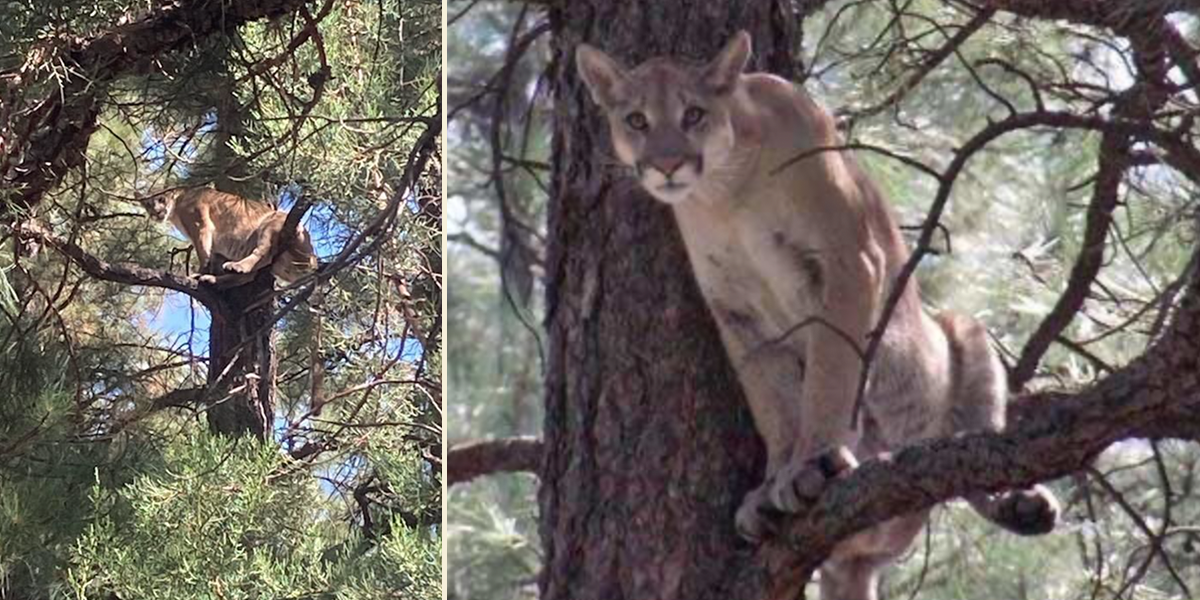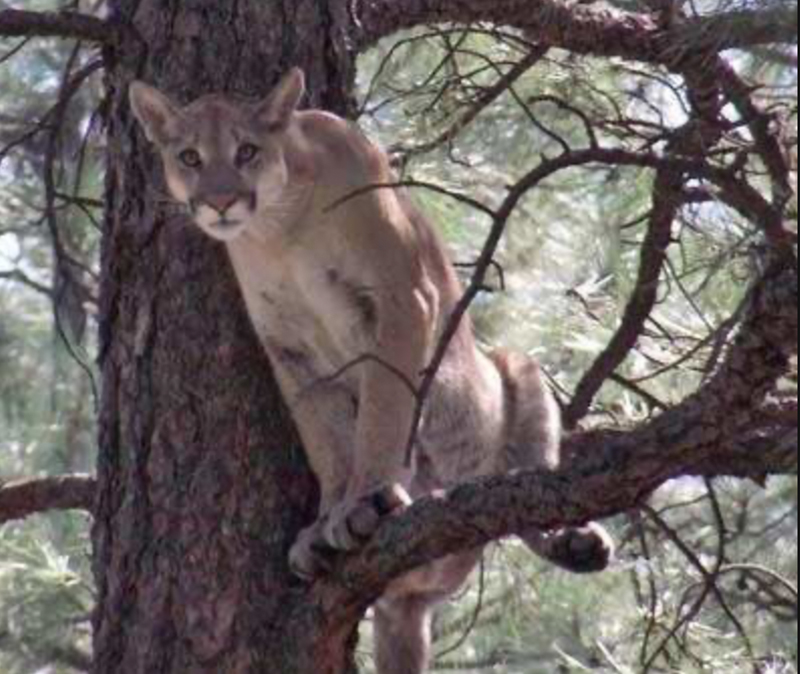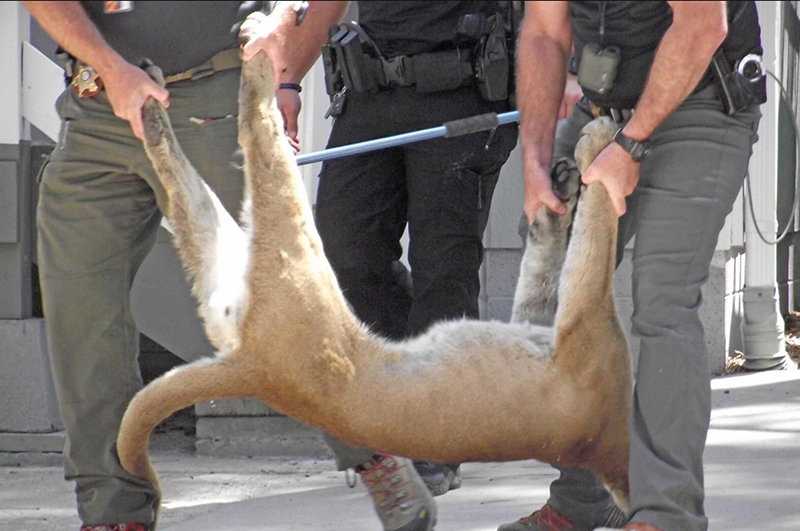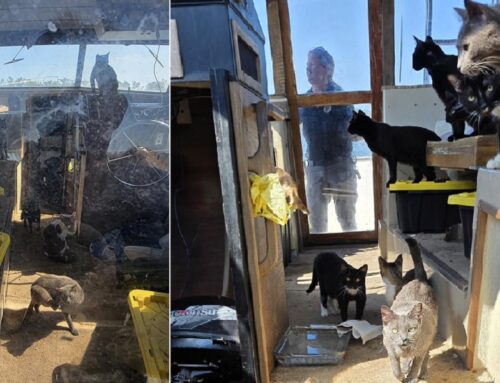A 200-pound mountain lion surprised Show Low, Arizona residents on August 6. It’s the largest city in the White Mountains, which prides itself on world-class hunting and fishing. Nearby, common wildlife includes deer, elk, bear, antelope, mountain lion, and turkey. In Arizona, an estimated 2,000 to 2,700 mountain lions roam but only very rarely are seen by humans.
That day, T. L. Williams and his neighbor Fred Kriesel weren’t expecting to see a lion outside their Fairway Park homes.
What’s a Monkey Doing in My Neighbor’s Tree?
The White Mountain Independent reports that Kriesel was talking on his phone when he saw what he thought could be a monkey in his neighbor William’sWilliam’s tree.
“I was sitting outside talking to a friend and looked up and said, “what is that tawny mess on the branch?”
At first, the long tail made him think of a monkey.
“I saw a tail and thought, “what is a monkey doing in that tree?” I got my binoculars from the house and saw it was a mountain lion just sitting, and I called 911.”
There in the tree, the mountain lion very calmly looked down at the dogs nearby. A stunned Kriesel wondered why it was there.
According to Williams, the dogs, including his Pit Bull Martha, had been barking early that morning at 8 am. Probably, he thought, they had scared the big cat up the tree.

Images via White Mountain Independent/Fred Kiesel, T.L. Williams
Tranquilizing a Mountain Lion
After Kriesel made the call, animal control arrived, followed by the Arizona Game and Fish Department (AZGFD). First, an officer loaded a rifle in case the situation became dangerous. However, they were able to dart the cougar, whose head caught on a branch.
To test if the cat was responsive, the officers threw rubber balls at it. After 15 minutes, the big cat fell from the tree, its eyes open. According to Kriesel, the officers estimated the mountain lion was a 2-year-old male weighing around 200 pounds.
“Judging by the size of the hands and arms, he was big. I have never seen one that big,” said Williams.
According to the neighbors, the whole process lasted from one-and-a-half hours to two hours. After the officers put a collar on the lion, they took him away. The rest of the day was “anti-climactic” and boring, they said. Hopefully, the lion would be relocated and released where he wouldn’t get into trouble, or so they thought.
A Sad Ending for a Beautiful Cat
Following reports of the captured mountain lion, the Independent followed up for detail on what became of the mountain lion. The following Monday, an AZGFD Public Affairs/Community Liaison let them know the cat was euthanized, per department policy.
“Speaking with both Kriesel and Williams, they were surprised to learn that was the outcome. Since the animal was tranquilized and collared, it was thought that he would likely be relocated and released,” they reported.
According to the spokesperson, “the policy regarding male adult black bears, all mountain lions, and adult coyotes, when identified in public, is to sedate and then euthanize.”
On the other hand, the average person may only harm a lion in self-defense or to defend another person.
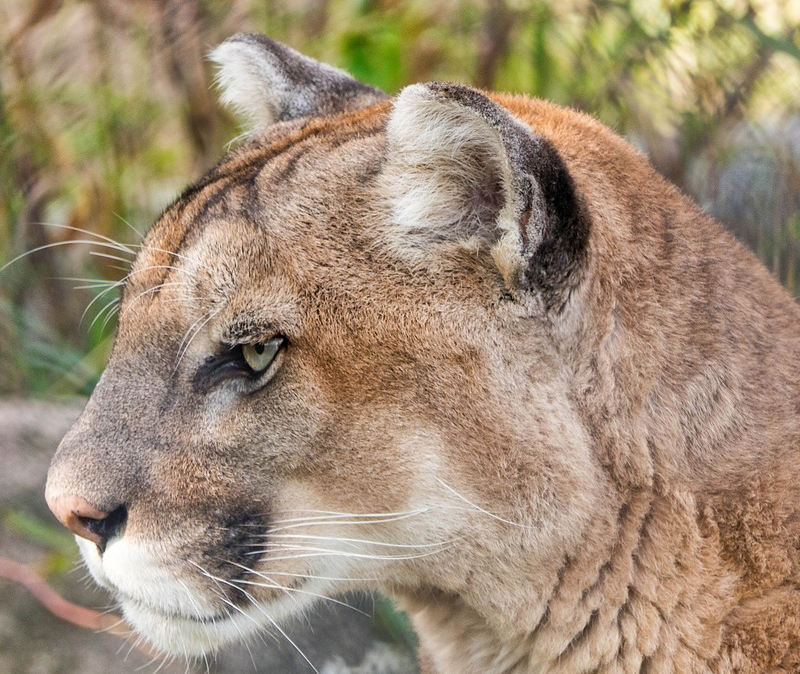
Mountain Lion by lintow via Pixabay, Pixabay License

Mountain lion by PLymouthDriver via Pixabay, Pixabay License
Policy Against Relocating Mountain Lions
Elaborating on the AZGFD policy, mountain lions, coyotes, and adult male black bears fall under Category II wildlife. As such, “the policy clearly states that they will be destroyed, not captured and relocated.”
When animals in Category II are in a location that threatens human health or safety, they are not relocated. Also, animals active in urban areas during the day, which normally move around at night, may be more likely to pose a threat.
“Because it is a hazard for the public, they do not want to make it a hazard somewhere else,” said Jacqueline Follmuth.
If relocated, mountain lions could enter territories already claimed by other big cats. Thus, a deadly confrontation could result, resulting in the death of both cats, she explained. Also, the relocated mountain lion could pose a threat to other visitors or residents.
More from Arizona GameAndFish:
Encountering Mountain Lions is Extremely Rare
Unfortunately, the growing human population means more people will encounter mountain lions. However, they are shy, elusive, and you may never see one, although they probably see you. Nevertheless, attacks on people are incredibly rare.
“In the past 100 years, there have been fewer than two dozen fatal cougar attacks in North America,” reports Outside.
The AZGFD suggests some tips for living in proximity with these beautiful creatures. For example, the cats are likely to return if they find access to food, water, or shelter. When hiking, it’s best not to walk alone and to make noise. For family pets, it’s best to keep them indoors or leashed and keep their food inside.

Mountain lion by pksinghd700 via Pixabay, Pixabay License
If a mountain lion approaches a human, one shouldn’t run, as it could engage their instinct to chase. Instead, maintain eye contact and slowly back away to a building, vehicle, or busy area. If the lion approaches, the idea is to make yourself look bigger and strong, waving arms and throwing objects like stones or branches.
If there is still an attack, try to remain standing, don’t turn your back, and fight back with any objects available.
More from Tri-City Herald:
Featured images via White Mountain Independent/Fred Kiesel, T.L. Williams


